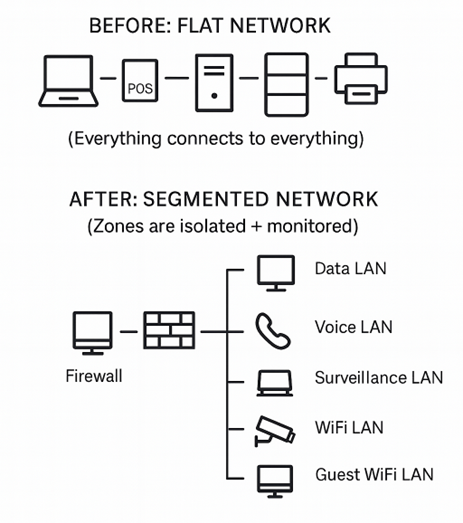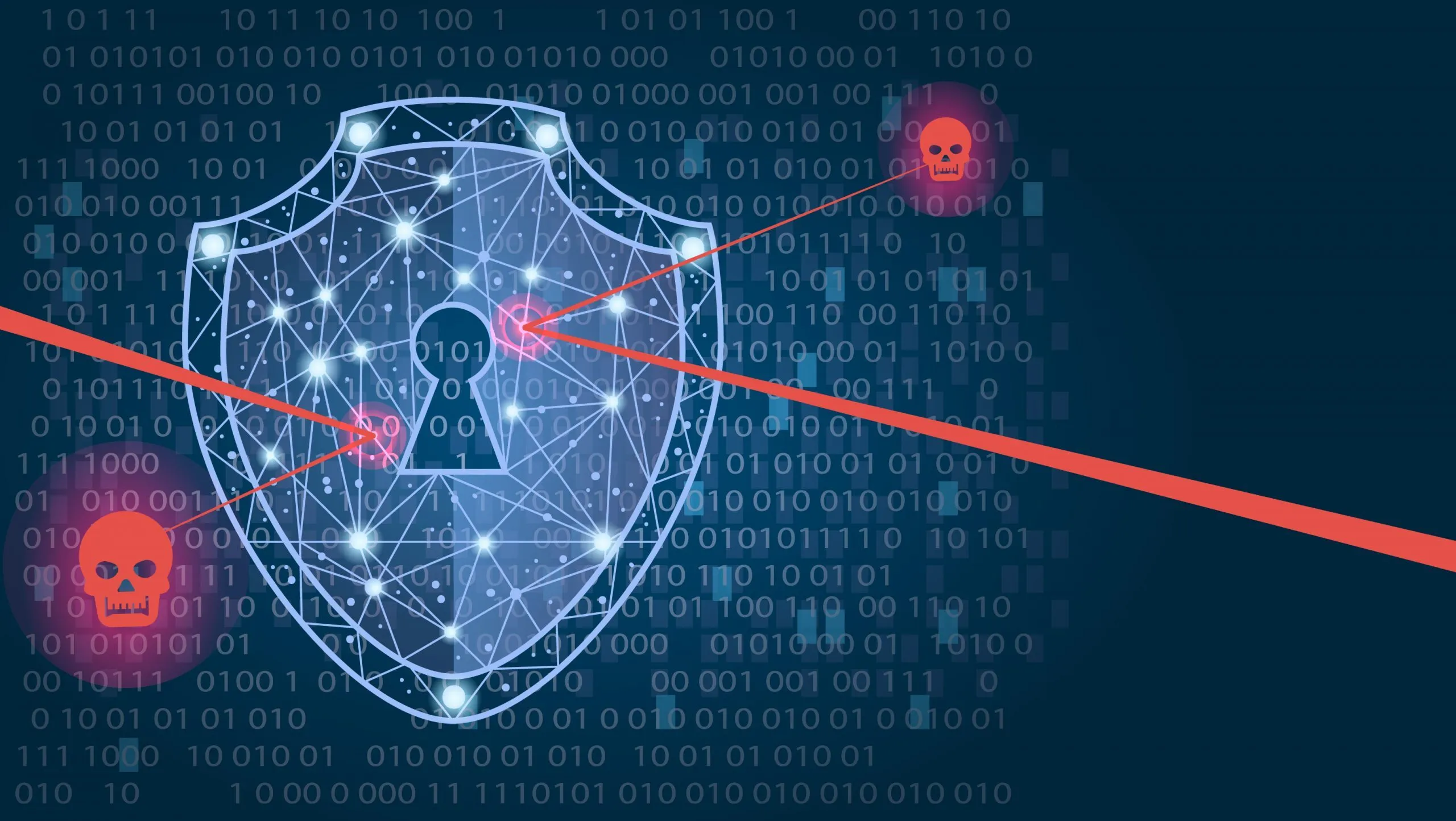Myth: “We’re a small office. We don’t need enterprise-level network segmentation.”
Reality: If one compromised laptop can move freely through your entire network, you’re handing attackers the keys to the kingdom — no matter how small the castle.
Why SMBs Can’t Afford Flat Networks
Micro-segmentation might sound like a tool only big businesses use. But with today’s cyber threats — especially ransomware and remote access attacks — small and midsize businesses (SMBs) are prime targets.
A flat network means all devices are on the same “playing field.” Printers, file servers, point-of-sale systems, and employee laptops — all accessible to each other. That might be convenient for day-to-day work. It’s also extremely convenient for attackers.
One compromised device (think: phishing email → infected laptop) can lead to everything from data theft to a full-network lockout.
What Does Micro-Segmentation Look Like?
Think of your network like a track meet.
The entire track is your network — but each type of data gets its own lane. Business data flows in one. Voice traffic runs in another.
Guest Wi-Fi? That’s its own separate lane too.
These lanes are isolated by default, and data can’t jump into another lane unless you set up specific rules. This reduces the chance of threats spreading from one part of your network to another.
And just like in a race, not all lanes are equal. Your Data LAN (where files, apps, and financial systems live) can be more locked down than something like the Guest Wi-Fi, which is intentionally kept open — but totally separate.
Here’s a simplified diagram:
Even basic segmentation can slow or stop an attack from spreading laterally inside your network.
What to Ask Your MSP
- Are we using any network segmentation today?
- Can guest WiFi and employee laptops access critical systems like servers or point-of-sale terminals?
- How are internal threats detected or limited?
- Can we apply Zero Trust principles — even in a small office?
- What’s the process for reviewing or updating our network design?
Bottom Line
Micro-segmentation isn’t overkill. It’s modern security hygiene.
Whether you have 5 users or 50, isolating critical systems, limiting unnecessary access, and adding visibility between network zones helps contain threats — not just detect them.
If your network still looks like the “flat” example above, it might be time for a conversation.
Need a second opinion on your setup?
We help businesses simplify their IT — and secure it properly.
Let’s talk.
Contact us here.


